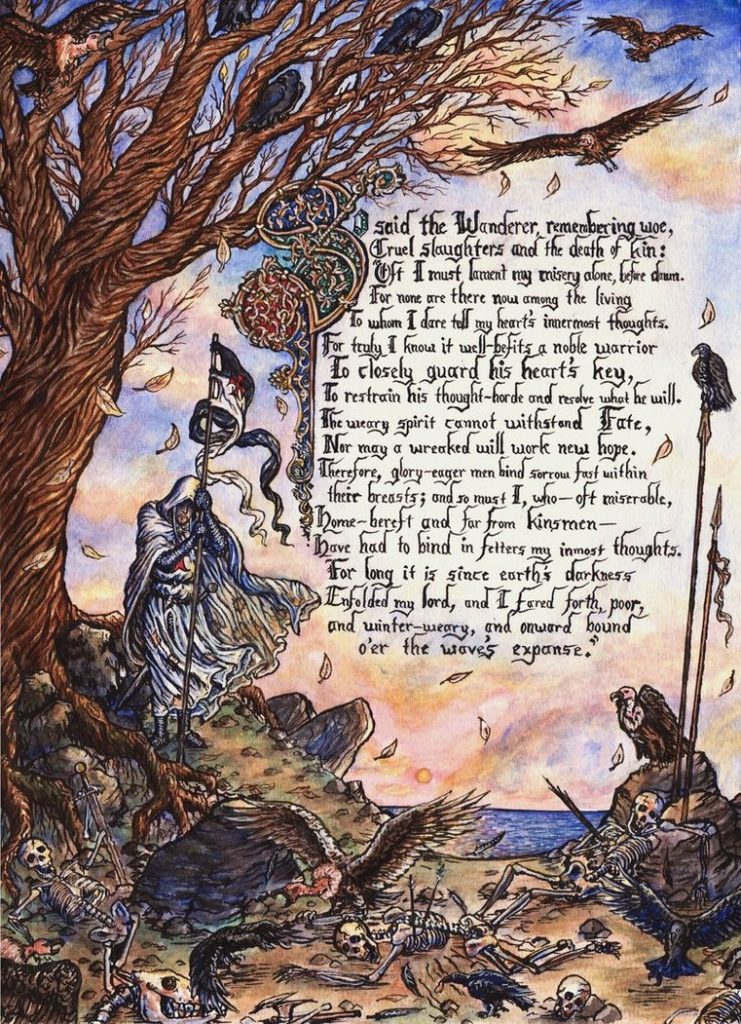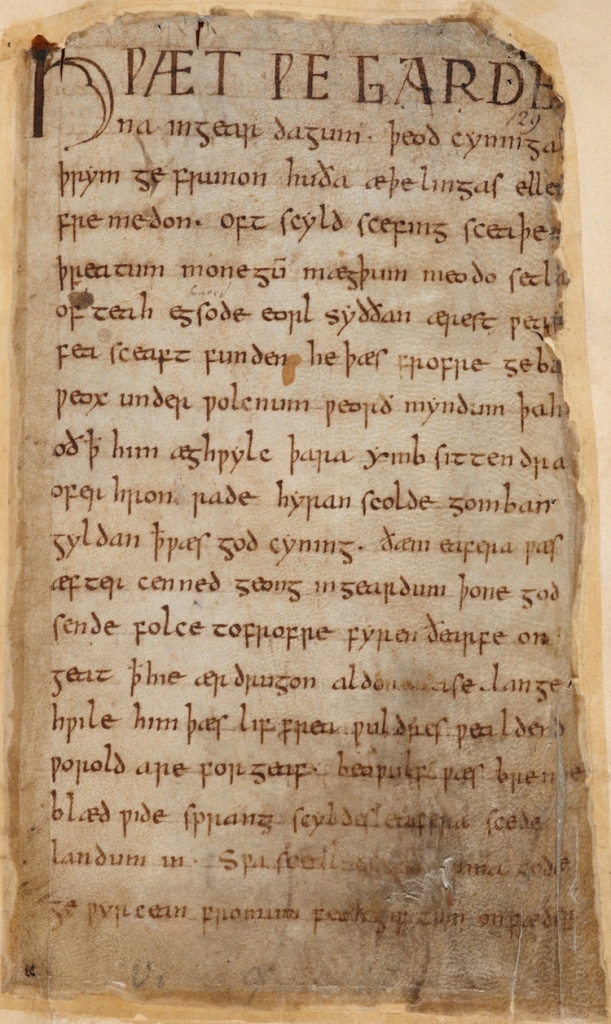
The Anglo Saxons Poetry marks the poetries written by the different authors during the middle of the fifth century time period up to 1066, the year of the Norman conquest. During this time, almost entirely the literature of the Anglo Saxons was always portrayed orally. Thus, the poems written during the same time frame being a part of the rich literature was also transmitted through orally and was performed everywhere orally.
This is one of the strongest points behind why the poetries of the Anglo Saxons period were rhythmical in nature. Unlike other poetries of other time periods, the poetries of the Anglo Saxon time period didn’t quite follow the policy of creating the rhythm through the techniques which were used of rhyme and meter. But these poems of the Anglo Saxons time frame used a unique system of alliteration.
As done in the meters of the traditional Europe, the syllables are not taken into consideration for counting. But, the total length of the line used to be determined with the help of stressed syllables. These syllables used to always begin having the same cluster of consonants. Thus, by following this mechanism the poetries became harsher and sounded more guttural. The rhythm which was produced used to sound more like that of a chanting rather than that of a song of the traditional type.
Textual Overview and Linguistic Overview
Contents
There are a large number of the manuscripts which could be retained from the Anglo Saxons time period. Most of these manuscripts were written somewhere in the time period of 9th to 11th century. These manuscripts are found in two distinct languages, that is, Latin and the vernacular language, which is old English.
King Alfred the great, realized that there were very few people who could read the Latin language and there were noticeably a large number of people who were comfortable with old English. Thus, King Alfred the Great took a decision and proposed that everyone should be educated by following the old English language.
Those ones who will excel on the same, shall be sent forward to learn the Latin language. This is one of the reasons behind many of the manuscripts being based on teachings and student oriented.
Amongst all the manuscripts which has been retained, 400 manuscripts are found to be written in the old English language. Out of these 400 manuscripts, 189 manuscripts are found to be majors. Not all of the texts which were present could be called as literature due to the sizeable body of work. Thus, only those texts were called as literature which had the sizeable body of work. It was also noted that nearly all the authors of the Anglo Saxons time period were anonymous, apart from some authors who are considered as the exceptions. This marks a great part of the history of the Anglo Saxons poetry.
Works of the Anglo Saxons Authors
There are two type of poems which were written by the authors of the Anglo Saxons time period. These two types are the Pre-Christian poetries and the Christian poetries. These poetries were majorly found divided in a total of four manuscripts.
The following illustrates further on the same:
- The First manuscript- the first manuscript, which is also known as the “Junius Manuscript”. This mainly illustrates the poetic anthology.
- The Second Manuscript- the second manuscript, which is also known as the “Exeter Book”. This also represent an anthology, but is located at the Exeter Cathedral as it was already donated there during the 11th
- The Third manuscript- the third manuscript, which is also known as the “Vercelli Book”. This book contains a mixture of both, prose as well as poetry. Since as of now there are no facts or knowledge on how this book is located at Vercelli (which is in Italy), the concerned topic has always been a topic for debate.
- The Fourth Manuscript- the fourth manuscript, which is also known as the “Nowell Codex”. Similar to the third manuscript, this is also a mixture of prose and poetry.
Theory of the Anglo Saxons Poetry
There is no fixed or known theory or any kind of rules or even systems present to know any kind of information regarding the poetries of the Anglo Saxons time period. It is only and purely on the modern analysis that we have obtained such information on the poetries of the Anglo Saxons time period. The first theory which was widely accepted was the theory placed by Eduard Sievers.
In 1885 he placed a theory in which he distinguished alliterative patterns of 5 distinct types. This theory is at present considered to be the most popular and well understood theory. There is another theory, which was placed by John C. Pope in the year 1942. In his theory he mentioned that the alliterative in consideration to the poetries of the Anglo Saxons time frame corresponded to certain types of melodies. He also mentioned that it also adds up musical notation to the texts of these poetries.
Poets of the Anglo Saxons Period

As mentioned above, most poets of the Anglo Saxons time period are anonymous. But, from the medieval sources, only 12 poets are known by their names. Out of these 12 poets, today we know the names of only 4 poets for their works in the vernacular language. These poets are Caedmon, King Alfred, Bede and Cynewulf. Further, amongst these 4 poets, only three poets, that are, Caedmon, King Alfred and Bede have their own known biographies. The best-known poets out of all these poets of the Anglo Saxons time period is Caedmon and he is also known as the father of poetries written in the old English language. The oldest surviving poetry in the old English language is that of Caedmon which is a single poetry of nine lines.
The poetry reads:
Now let us praise the Guardian of the Kingdom of Heaven
the might of the Creator and the thought of his mind,
the work of the glorious Father, how He, the eternal Lord
established the beginning of every wonder.
For the sons of men, He, the Holy Creator
first made heaven as a roof, then the
Keeper of mankind, the eternal Lord
God Almighty afterwards made the middle world
the earth, for men.

